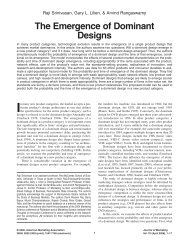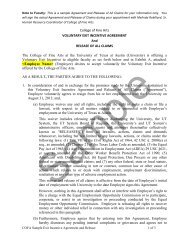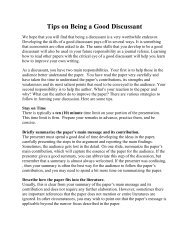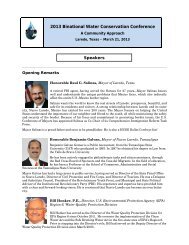Invited Talks: Transition Metal Oxides - University Blog Service - The ...
Invited Talks: Transition Metal Oxides - University Blog Service - The ...
Invited Talks: Transition Metal Oxides - University Blog Service - The ...
Create successful ePaper yourself
Turn your PDF publications into a flip-book with our unique Google optimized e-Paper software.
<strong>The</strong> John B. Goodenough Symposium in Materials Science & Engineering –<br />
In Honor of His 90 th Birthday<br />
<strong>The</strong> <strong>University</strong> of Texas at Austin, Austin, Texas<br />
October 26-27, 2012<br />
Lessons from the early days of Li-ion<br />
Jeff Dahn<br />
Dalhousie <strong>University</strong><br />
Email: Website:<br />
Abstract Body in Space Below:<br />
(Please use single space, Times New Roman or similar font, size 12, and limit to 250 Words. Please DO NOT exceed the space<br />
below.)<br />
Most early Li‐ion cells used LiCoO2 as the positive electrode material, even though John Goodenough and coworkers<br />
showed that LiNiO2 was also an intercalation electrode. At Moli Energy Ltd, where I was Director of<br />
Research, we "bet the farm" on LiNiO2 around 1988 due to the lower cost of Ni compared to Co. Our early scale<br />
up experiments led to surprises regarding the reactivity of Li(x)NiO2 with electrolyte at elevated temperature.<br />
Using my old research report records, I will describe our successes and ultimate failure using LiNiO2 in Li‐ion cells.<br />
Characterizing charged positive electrode reactivity with electrolyte turns out to be one of the first (not the last!)<br />
experiments one should do when evaluating new electrode materials. <strong>The</strong>se lessons are critical for young (and<br />
old!) researchers moving into Na‐ion and Mg‐ion systems.







